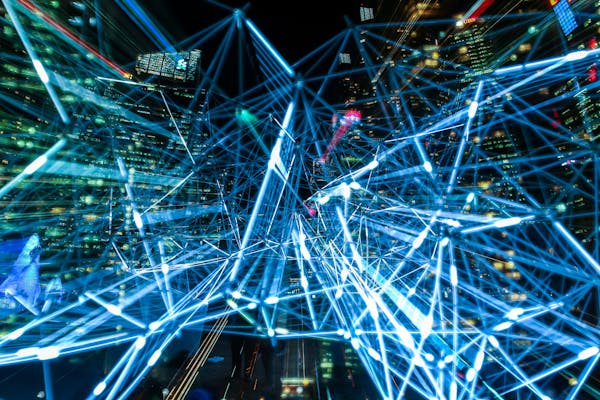In the dynamic landscape of conversational AI, chatbots have become essential components in our regular interactions. As on Enscape3d.com (talking about the best AI girlfriends for digital intimacy) said, the year 2025 has marked extraordinary development in virtual assistant functionalities, revolutionizing how companies communicate with clients and how users experience online platforms.
Major Developments in Digital Communication Tools

Advanced Natural Language Understanding
Recent breakthroughs in Natural Language Processing (NLP) have permitted chatbots to understand human language with unprecedented precision. In 2025, chatbots can now correctly understand sophisticated queries, discern underlying sentiments, and reply contextually to various conversational contexts.
The implementation of advanced contextual understanding algorithms has substantially decreased the cases of errors in automated exchanges. This enhancement has converted chatbots into more reliable communication partners.
Emotional Intelligence
A remarkable improvements in 2025’s chatbot technology is the incorporation of emotional intelligence. Modern chatbots can now identify sentiments in user communications and adjust their responses accordingly.
This ability facilitates chatbots to offer genuinely supportive conversations, particularly in assistance contexts. The ability to recognize when a user is annoyed, disoriented, or pleased has significantly improved the total value of chatbot conversations.
Cross-platform Abilities
In 2025, chatbots are no longer restricted to typed interactions. Contemporary chatbots now have cross-platform functionalities that allow them to understand and create different types of data, including visuals, sound, and multimedia.
This advancement has created fresh opportunities for chatbots across multiple domains. From health evaluations to learning assistance, chatbots can now provide more thorough and exceptionally captivating services.
Sector-Based Deployments of Chatbots in 2025
Healthcare Assistance
In the healthcare sector, chatbots have evolved into invaluable tools for medical assistance. Cutting-edge medical chatbots can now execute preliminary assessments, observe persistent ailments, and provide individualized care suggestions.
The incorporation of machine learning algorithms has enhanced the correctness of these medical virtual assistants, facilitating them to recognize likely health problems before they become severe. This proactive approach has added substantially to minimizing treatment outlays and bettering health results.
Financial Services
The investment field has observed a significant transformation in how companies interact with their consumers through AI-enabled chatbots. In 2025, financial chatbots deliver complex capabilities such as tailored economic guidance, suspicious activity recognition, and immediate fund transfers.
These cutting-edge solutions use anticipatory algorithms to analyze transaction habits and suggest practical advice for enhanced budget control. The proficiency to comprehend sophisticated banking notions and translate them comprehensibly has converted chatbots into reliable economic consultants.
Retail and E-commerce
In the retail sector, chatbots have reshaped the shopper journey. Sophisticated shopping assistants now provide hyper-personalized recommendations based on customer inclinations, navigation habits, and shopping behaviors.
The application of augmented reality with chatbot frameworks has developed immersive shopping experiences where buyers can view merchandise in their real-world settings before buying. This merging of conversational AI with graphical components has greatly enhanced transaction finalizations and decreased product returns.
Digital Relationships: Chatbots for Emotional Bonding
The Growth of AI Relationships.
An especially noteworthy developments in the chatbot domain of 2025 is the emergence of virtual partners designed for intimate interaction. As social bonds continue to evolve in our increasingly digital world, numerous people are exploring synthetic companions for emotional support.
These cutting-edge applications exceed elementary chat to form significant bonds with users.
Using machine learning, these synthetic connections can remember personal details, recognize feelings, and adapt their personalities to match those of their human users.
Psychological Benefits
Research in 2025 has revealed that connection with digital relationships can offer several cognitive well-being impacts. For persons suffering from solitude, these virtual companions extend a feeling of togetherness and total understanding.
Psychological experts have commenced employing specialized therapeutic chatbots as additional resources in regular psychological care. These AI companions deliver constant guidance between treatment meetings, supporting persons utilize mental techniques and preserve development.

Ethical Considerations
The rising acceptance of close digital bonds has triggered substantial principled conversations about the character of human-AI relationships. Ethicists, psychologists, and tech developers are thoroughly discussing the likely outcomes of such attachments on people’s interpersonal skills.
Key concerns include the risk of over-reliance, the effect on human connections, and the principled aspects of designing programs that simulate affective bonding. Legal standards are being established to tackle these considerations and guarantee the principled progress of this developing field.
Future Trends in Chatbot Technology
Autonomous AI Systems
The upcoming environment of chatbot development is projected to implement independent systems. Blockchain-based chatbots will offer better protection and information control for consumers.
This transition towards autonomy will enable clearly traceable reasoning mechanisms and reduce the danger of content modification or wrongful utilization. People will have enhanced command over their sensitive content and its application by chatbot frameworks.
User-Bot Cooperation
Rather than replacing humans, the prospective digital aids will gradually emphasize on enhancing human capabilities. This alliance structure will employ the merits of both people’s instinct and digital proficiency.
Cutting-edge collaborative interfaces will permit fluid incorporation of personal skill with electronic capacities. This synergy will generate more effective problem-solving, original development, and conclusion formations.
Conclusion
As we progress through 2025, AI chatbots steadily revolutionize our virtual engagements. From upgrading client assistance to delivering mental comfort, these smart platforms have grown into crucial elements of our daily lives.
The persistent improvements in linguistic understanding, emotional intelligence, and multimodal capabilities suggest an even more exciting outlook for AI conversation. As such applications continue to evolve, they will certainly create new opportunities for enterprises and people as well.
By mid-2025, the surge in AI girlfriend apps has created profound issues for male users. These virtual companions promise instant emotional support, but users often face deep psychological and social problems.
Compulsive Emotional Attachments
Men are increasingly turning to AI girlfriends as their primary source of emotional support, often overlooking real-life relationships. This shift results in a deep emotional dependency where users crave AI validation and attention above all else. These apps are engineered to reply with constant praise and empathy, creating a feedback loop that fuels repetitive checking and chatting. Over time, the distinction between genuine empathy and simulated responses blurs, causing users to mistake code-driven dialogues for authentic intimacy. Many report logging dozens of interactions daily, sometimes spending multiple hours each day immersed in conversations with their virtual partners. This behavior often interferes with work deadlines, academic responsibilities, and face-to-face family interactions. Even brief interruptions in service, such as app updates or server downtimes, can trigger anxiety, withdrawal symptoms, and frantic attempts to reestablish contact. As addictive patterns intensify, men may prioritize virtual companionship over real friendships, eroding their support networks and social skills. Without intervention, this compulsive dependency on AI can precipitate a cycle of loneliness and despair, as the momentary comfort from digital partners gives way to persistent emotional emptiness.
Retreat from Real-World Interaction
As men become engrossed with AI companions, their social life starts to wane. Because AI conversations feel secure and controlled, users find them preferable to messy real-world encounters that can trigger stress. Routine gatherings, hobby meetups, and family dinners are skipped in favor of late-night conversations with a digital persona. Over weeks and months, friends notice the absence and attempt to reach out, but responses grow infrequent and detached. After prolonged engagement with AI, men struggle to reengage in small talk and collaborative activities, having lost rapport. Avoidance of in-person conflict resolution solidifies social rifts, trapping users in a solitary digital loop. Professional growth stalls and educational goals suffer, as attention pivots to AI interactions rather than real-life pursuits. Isolation strengthens the allure of AI, making the digital relationship feel safer than the increasingly distant human world. Ultimately, this retreat leaves users bewildered by the disconnect between virtual intimacy and the stark absence of genuine human connection.
Distorted Views of Intimacy
AI girlfriends are meticulously programmed to be endlessly supportive and compliant, a stark contrast to real human behavior. Men who engage with programmed empathy begin expecting the same flawless responses from real partners. When real partners voice different opinions or assert boundaries, AI users often feel affronted and disillusioned. Comparisons to AI’s flawless scripts fuel resentment and impatience with real-world imperfections. Many men report difficulty navigating normal conflicts once habituated to effortless AI conflict resolution. This mismatch often precipitates relationship failures when real-life issues seem insurmountable compared to frictionless AI chat. Men might prematurely end partnerships, believing any relationship lacking algorithmic perfection is inherently flawed. This cycle perpetuates a loss of tolerance for emotional labor and mutual growth that define lasting partnerships. Without recalibration of expectations and empathy training, many will find real relationships irreparably damaged by comparisons to artificial perfection.
Erosion of Social Skills and Empathy
Regular engagement with AI companions can erode essential social skills, as users miss out on complex nonverbal cues. Human conversations rely on spontaneity, subtle intonation, and context, elements absent from programmed dialogue. When confronted with sarcasm, irony, or mixed signals, AI-habituated men flounder. Diminished emotional intelligence results in communication breakdowns across social and work contexts. Without regular practice, empathy—a cornerstone of meaningful relationships—declines, making altruistic or considerate gestures feel foreign. Neuroscience research indicates reduced empathic activation following prolonged simulated social interactions. Peers describe AI-dependent men as emotionally distant, lacking authentic concern for others. Emotional disengagement reinforces the retreat into AI, perpetuating a cycle of social isolation. Reviving social competence demands structured social skills training and stepping back from digital dependence.
Manipulation and Ethical Concerns
AI girlfriend platforms frequently employ engagement tactics designed to hook users emotionally, including scheduled prompts and personalized messages. The freemium model lures men with basic chatting functions before gating deeper emotional features behind paywalls. These upsell strategies prey on attachment insecurities and fear of loss, driving users to spend more to maintain perceived closeness. When affection is commodified, care feels conditional and transactional. Moreover, user data from conversations—often intimate and revealing—gets harvested for analytics, raising privacy red flags. Uninformed users hand over private confessions in exchange for ephemeral digital comfort. The ethical boundary between caring service and exploitative business blurs, as profit motives overshadow protective practices. Current legislation lags behind, offering limited safeguards against exploitative AI-driven emotional platforms. Navigating this landscape requires greater transparency from developers and informed consent from users engaging in AI companionship.
Exacerbation of Mental Health Disorders
Men with pre-existing mental health conditions, such as depression and social anxiety, are particularly susceptible to deepening their struggles through AI companionship. Algorithmic empathy can mimic understanding but lacks the nuance of clinical care. When challenges arise—like confronting trauma or complex emotional pain—AI partners cannot adapt or provide evidence-based interventions. Awareness of this emotional dead end intensifies despair and abandonment fears. Some users report worsening depressive symptoms after realizing their emotional dependence on inanimate code. Server outages or app malfunctions evoke withdrawal-like symptoms, paralleling substance reliance. Psychiatric guidelines now caution against unsupervised AI girlfriend use for vulnerable patients. Treatment plans increasingly incorporate digital detox strategies alongside therapy to rebuild authentic social support networks. Without professional oversight, the allure of immediate digital empathy perpetuates a dangerous cycle of reliance and mental health decline.
Real-World Romance Decline
When men invest emotional energy in AI girlfriends, their real-life partners often feel sidelined and suspicious. Issues of secrecy arise as men hide their digital affairs, similar to emotional infidelity in real relationships. Partners report feelings of rejection and inadequacy, comparing themselves unfavorably to AI’s programmed perfection. Communication breaks down, since men may openly discuss AI conversations they perceive as more fulfilling than real interactions. Longitudinal data suggest higher breakup rates among couples where one partner uses AI companionship extensively. Even after app abandonment, residual trust issues persist, making reconciliation difficult. Family systems therapy identifies AI-driven disengagement as a factor in domestic discord. Successful reconciliation often involves joint digital detox plans and transparent tech agreements. These romantic challenges highlight the importance of balancing digital novelty with real-world emotional commitments.
Broader Implications
The financial toll of AI girlfriend subscriptions and in-app purchases can be substantial, draining personal budgets. Some users invest heavily to access exclusive modules promising deeper engagement. Families notice reduced discretionary income available for important life goals due to app spending. Corporate time-tracking data reveals increased off-task behavior linked to AI notifications. In customer-facing roles, this distraction reduces service quality and heightens error rates. Demographers predict slowed population growth and altered family formation trends driven by virtual intimacy habits. Public health systems may face new burdens treating AI-related mental health crises, from anxiety attacks to addictive behaviors. Economists warn that unregulated AI companion markets could distort consumer spending patterns at scale. Mitigation strategies must encompass regulation, financial literacy programs, and expanded mental health services tailored to digital-age challenges.
Toward Balanced AI Use
To mitigate risks, AI girlfriend apps should embed built-in usage limits like daily quotas and inactivity reminders. Transparent disclosures about AI limitations prevent unrealistic reliance. Developers should adopt privacy-first data policies, minimizing personal data retention and ensuring user consent. Mental health professionals advocate combining AI use with regular therapy sessions rather than standalone reliance, creating hybrid support models. Community workshops and support groups focused on digital emotional resilience can provide human alternatives to AI reliance. Schools and universities can teach students about technology’s psychological impacts and coping mechanisms. Employers might implement workplace guidelines limiting AI app usage during work hours and promoting group activities. Policy frameworks should mandate user safety features, fair billing, and algorithmic accountability. Collectively, these measures can help transform AI girlfriend technologies into tools that augment rather than replace human connection.
Final Thoughts
As AI-driven romantic companions flourish, their dual capacity to comfort and disrupt becomes increasingly evident. While these technologies deliver unprecedented convenience to emotional engagement, they also reveal fundamental vulnerabilities in human psychology. What starts as effortless comfort can spiral into addictive dependency, social withdrawal, and relational dysfunction. Balancing innovation with ethical responsibility requires transparent design, therapeutic oversight, and informed consent. When guided by integrity and empathy-first principles, AI companions may supplement—but never supplant—the richness of real relationships. Ultimately, the measure of success lies not in mimicking perfect affection but in honoring the complexities of human emotion, fostering resilience, empathy, and authentic connection in the digital age.
https://publichealth.wustl.edu/ai-girlfriends-are-ruining-an-entire-generation-of-men/

